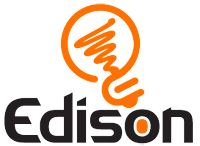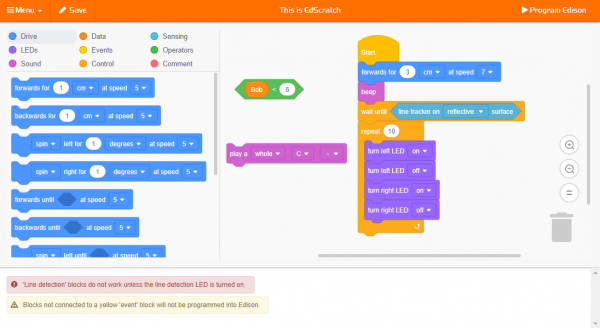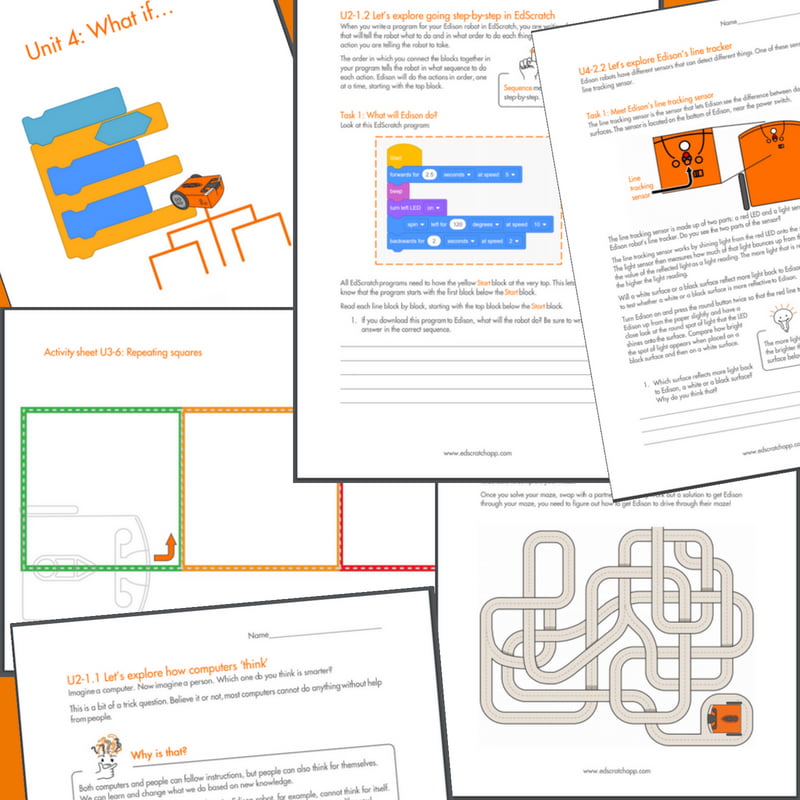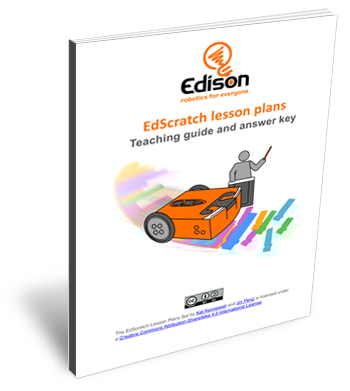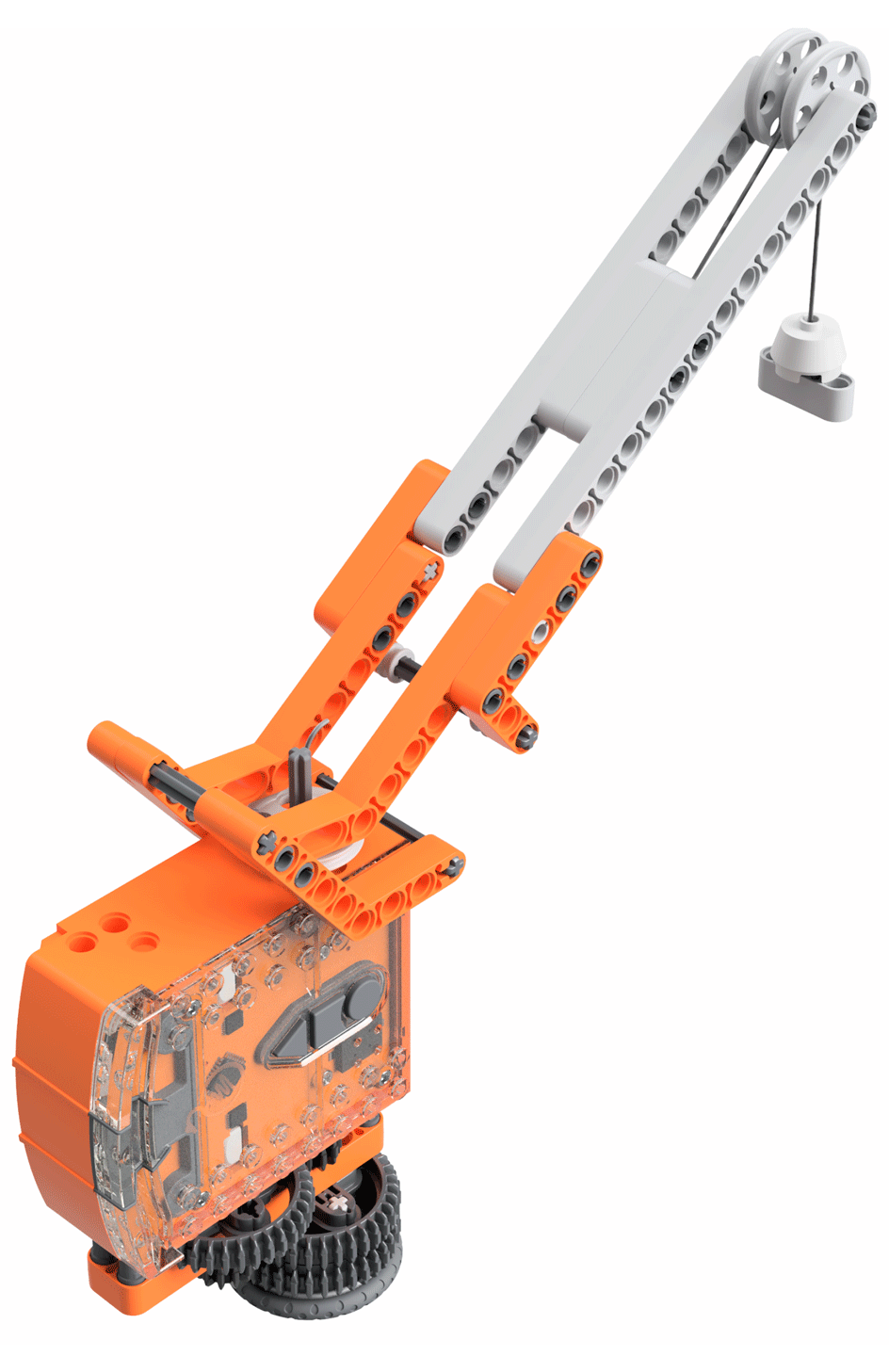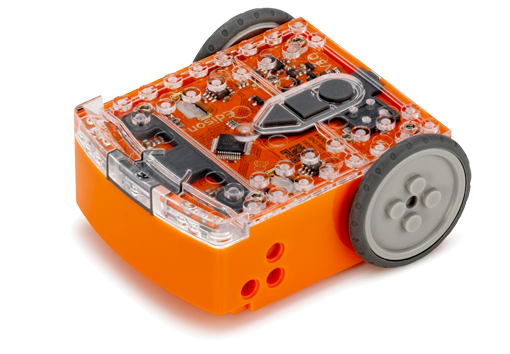EdScratch programming language
EdScratch is a vertical block-based visual programming language based on Scratch. EdScratch combines the ease of drag-and-drop programming with powerful functionality and versatility. The result is a robot programming language that is easy to learn and offers a robust platform for computer science education.
The online EdScratch programming environment is designed to deliver meaningful computer science education through an easy-to-use interface. EdScratch’s intuitive layout and the simplicity of block-based coding makes EdScratch an ideal programming language for students aged 10 and up. Helpful features, like the built-in bug box, make the transition to using more complex programming structures approachable even with no prior coding experience. As students gain confidence in coding, they can do even more by controlling inputs, manipulating data, and creating and utilising variables, making EdScratch a perfect platform to use Edison’s features in engaging, creative ways.
You can access EdScratch online at www.edscratchapp.com
Resources
These free, downloadable resources can help you get the most out of EdScratch.
The EdScratch lesson plans set
Consisting of the Student Set and accompanying Teacher’s Guide, The EdScratch Lesson Plans Set includes a complete curriculum for teaching computational thinking and computer science using EdScratch and the Edison robot. The lesson activities and project ideas are organised into six units beginning with an initial preparatory unit and culminating in an open-ended project-based unit. Designed for flexible use, you can choose just the activities that suit your interests or teach the entire curriculum!
Lesson activities – student set
The student set of the EdScratch lesson activities contains worksheets and activity sheets designed for independent use by students in Year 5 (10-11 years old) and above. With 98 activity options organised into six units, the student set contains a mix of structured and open-ended activities that introduce key concepts and learning objectives while engaging students in an active exploration of Edison and EdScratch.
The student lessons include clear instructions, colourful illustrations, activity sheets for testing program solutions and challenges for students to work through as they learn computational thinking and computer science fundamentals.
Download the EdScratch lesson activities – complete student set
Teacher’s guide to EdScratch
This guide offers overviews, delivery recommendations and other supporting information for the EdScratch lesson activities to help make teaching EdScratch easy and fun. Designed to be used in partnership with the EdScratch student set, the teaching guide provides:
- an overview of each unit, including the key learning objectives of that unit,
- an overview of each lesson with a list of all activities in that lesson,
- a dedicated section per activity detailing:
- the activity’s purpose and objectives,
- supporting information including estimated time requirements, supply requirements, and tips for delivery, and
- an answer key including recommendations on assessing student work.
EdScratch warning messages guide
The EdScratch programming environment includes a ‘bug box’ at the bottom of the app which automatically checks for errors in the program. Warning messages are displayed in this bug box to help you find and fix problems in your code.
This guide includes all the warning messages that can be displayed in the bug box of the EdScratch language app, including an explanation of what each means and examples of when you may encounter the message.
EdScratch programming projects with EdCreate
Give your students opportunities to program solutions to real-world robotic challenges using EdScratch and EdCreate, the Edison robot creator’s kit. Multiple programming challenges using the EdCreate EdBuilds are available in the EdCreate teaching guide. Or unlock your student’s creativity and EdScratch programming prowess with the EdCreate EdChallenges!
EdScratch Tutorial Video
Designed for beginners, the EdScratch tutorial video introduces the EdScratch programming environment and how to download your first program, before moving on to different block categories including the drive blocks, loops, sensors and variables.
EdScratch Unit 1 Tutorial – The EdScratch programming environment and how to download a program
EdScratch Unit 2 Tutorial – How to make Edison drive, flash lights and make sound using EdScratch
EdScratch Unit 3 Tutorial – Introducing loops, events and commenting in EdScratch
EdScratch Unit 4 Tutorial – EdScratch sensor blocks
EdScratch Unit 5 Tutorial – Variables and how to manipulate data using EdScratch
Additional resources
- Example code for the barcode programs in EdScratch
EdScratch resources translation kit
Looking to translate the EdScratch resources into another language? Download the translation kit to get the editable files you will need.
